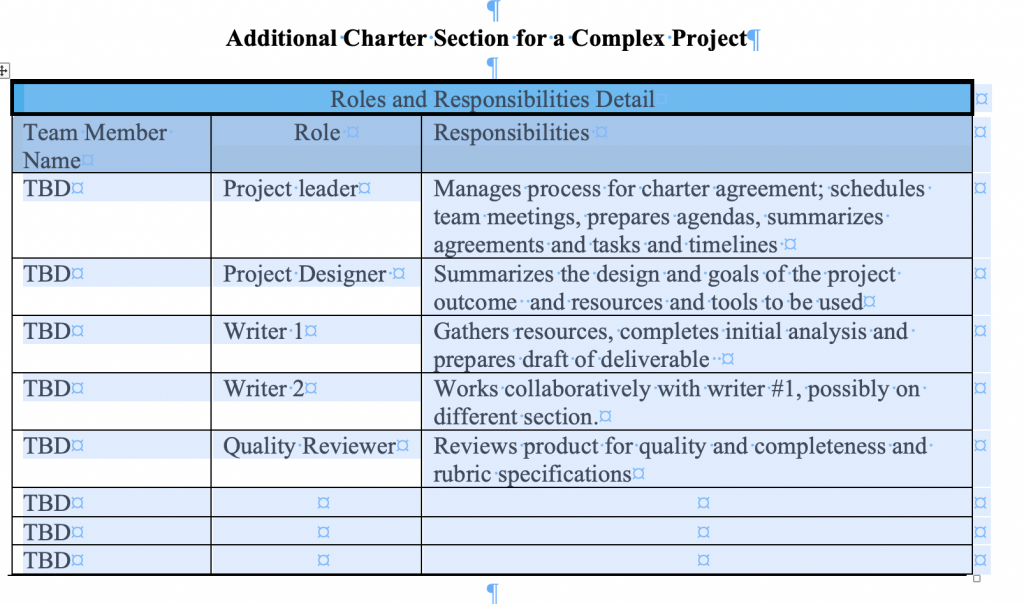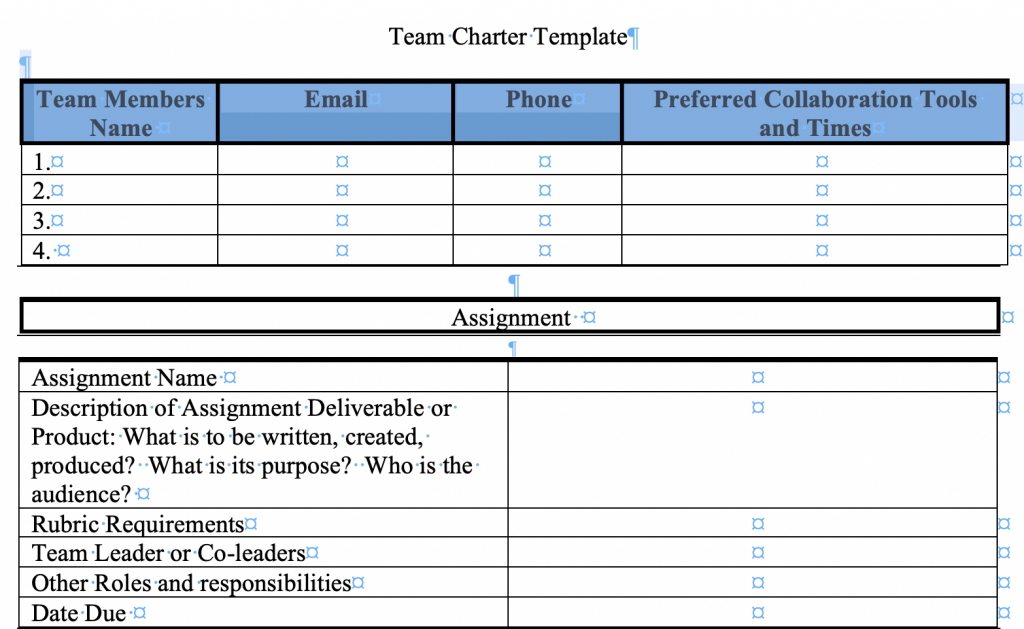Do your students moan when you assign a team project or design an assignment requiring even simple peer review or collaboration? Do they envision challenges such as “doing all the work themselves” or working with a “difficult” or absent team member? This happens in life, everywhere, so what can be done?
Team projects, even small teams such as 2-3 members, always face challenges. A team charter can help by clarifying roles and responsibilities, expectations, preferred tools and time for working. A charter also sets out agreements on the responsibilities and practices for collaborating successively. This posting contains a team charter template that can be adapted for simple or complex team projects. Late Middle Tip 9 in Chapter 8 in the Online Teaching Survival Guide suggested that students who are tasked with working on projects together might launch the project by creating a team charter. This post contains a charter template that you can recommend or adapt for your students.
Depending on the task and the learning goals, a team charter can either be very simple or more complex. This posting contains a charter that can be adapted for a variety of learning tasks, and potentially even individual projects.
A simple charter might be used for tasks such as the following:
- Creating a summary document for a week’s discussion session
- Providing feedback on a peer’s project proposal
- Creating a set of questions for an interview, or for a quiz
- Preparing an analysis and summary of how a new concept is applied
A more complex charter might be used for tasks such as the following:
- Preparing an analysis and description of a problem framework
- Preparing recommendations for a case study analysis
- Providing feedback and consulting on a student’s project draft
- Preparing a summary report on concept applications
A Simple Team Charter
A simple team charter has only three sections. The first section lists the team members, their contact info and preferred times and ways of communicating. Section two summarizes the project assignment with name, purpose, specifications and date due. Section three is the Task Plan, for detailing the steps in the project with milestones, and who will do what using which tools, all corresponding to assignment rubrics and due date.
Additional Section for a Complex Project
More complex team projects might add the following section to their team charter. This section details out the team members roles and responsibilities.

Notes: In online programs smaller teams work better than larger teams. This means projects should be designed to be successful with teams of two or three. This means that team members assume two, or even three roles on a project. However, successful projects acknowledge the need for these different roles and responsibilities.
This template may be used, adapted by anyone for positive purposes. A reference to the website at www.designingforlearning.info would be appreciated, but not required. If you would prefer a word document with the template that is easier to manipulate, download it here.
Creator: Judith V. Boettcher, Designing for Learning, June 26 2021.



Dr. Boettcher,
These templates are very helpful and will enable me to get projects off to a better start.
Thank you.
Sincerely,
Eugene Ritchie
: Fifth Element of a Successful Team Charter: Internal Checks, Balances, and Reviews A team charter is only as effective as the actions that are measured against it, so it’s important for the team to spell out how internal checks and balances and reviews will be handled. What is expected of each sub-team and team member, and when? How often are full team check-ins, and what kind of topics should be covered? What are the goals of individual team members and how will they be measured?